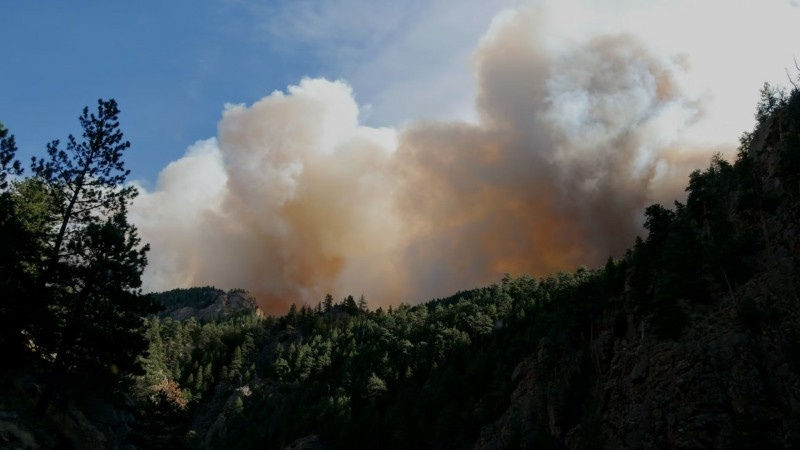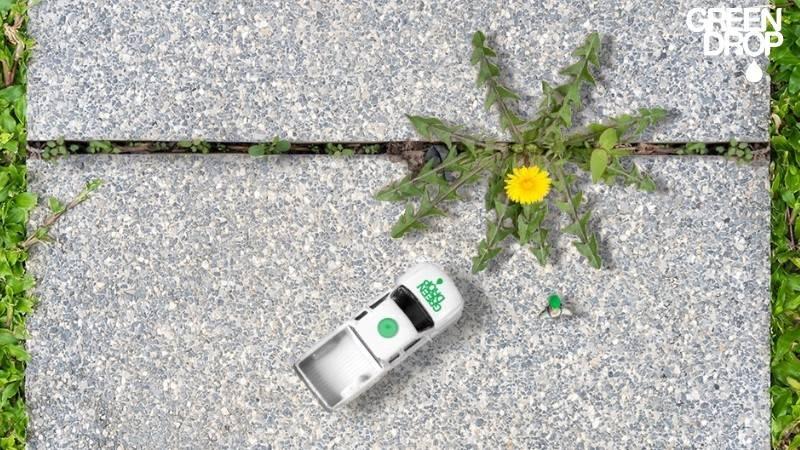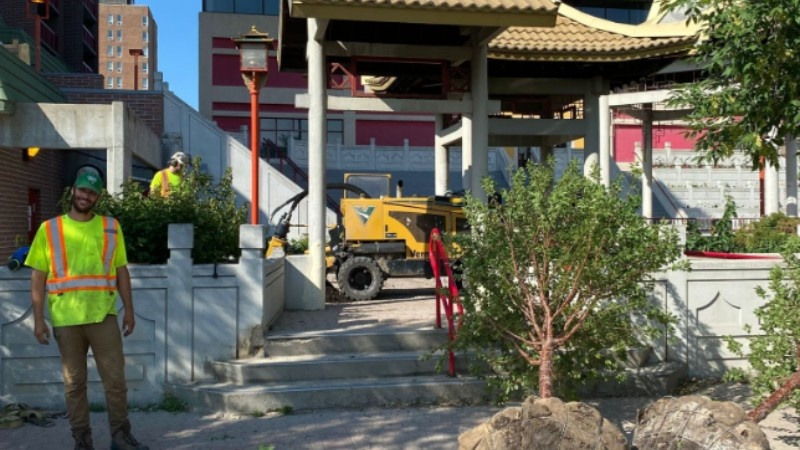How You Can Reduce Fire Risks with Smart Vegetation Management
Reading time: 5 - minutesWildfires are becoming more frequent and intense in Western Canada, but there are steps we can take to reduce the risks, starting right at home.
In 2024, over 5.3 million hectares burned, with Alberta, British Columbia, Saskatchewan, and the Northwest Territories being hit especially hard. Closer to home, Jasper, Alberta, faced one of its most destructive wildfire seasons yet.
While we can’t control the weather, we can manage the conditions around our homes. With droughts, dry vegetation, and high winds fueling many of these fires, smart vegetation management is one of the most practical and proactive ways to protect your property—and help safeguard your community.

How Weeds in Non-Turf Areas Can Contribute to Wildfire Spread
Wildfire prevention doesn’t stop at your lawn—it’s just as important to pay attention to the spaces around it. Weeds and unmanaged vegetation in non-turf areas like gravel pads, fence lines, alleys, and utility corridors can quickly dry out and become prime wildfire fuel.
These forgotten patches may not seem like much, but when temperatures rise and winds pick up, dry weeds can ignite quickly and spread the fire toward homes, structures, or natural areas.
That’s where smart vegetation management comes in. By regularly controlling vegetation growth in these spaces, you’re not just keeping things tidy—you’re removing fire hazards. It's a simple but powerful way to reduce risk and create a more defensible property.
Vegetation Control Tips to Help Prevent Wildfires Around Your Property

Here are practical tips to mitigate these hazards:
- Clear Weeds Along Fence Lines and Buildings: Weeds growing along fences, garages, sheds, or the sides of your home might not look like much, but when left unmanaged, they dry out quickly and act like kindling. If a fire sparks nearby, these dry plants can carry flames right up to your structures. Regularly mowing, pulling, or applying targeted vegetation control in these areas can create a crucial buffer and reduce the chances of fire catching and spreading.
- Maintain Bare Ground in Gravel and Utility Areas: Gravel lots, storage yards, and areas around utility poles or propane tanks are ideal spots for weed growth, and because they’re out of the way, they’re often ignored. Our vegetation control services are specifically designed for non-turf areas, targeting weeds before they become a problem. This proactive approach keeps fire-prone growth from taking hold in the first place.
- Clean Up Under Decks, Stairs, and Walkways: Dry debris and weeds under your deck or stairs might seem harmless, but they’re hidden fire risks. Embers from nearby fires can easily ignite this dried-out material. Clearing weeds and applying a post-emergent herbicide in these tucked-away spots can help maintain fire-safe zones all around your home.
- Create a Weed-Free Buffer Zone: One of the most effective wildfire mitigation strategies is defensible space. This means creating a clear, vegetation-free perimeter—ideally 1 to 2 metres wide—around buildings, fences, and outdoor storage. It slows the fire’s ability to spread and gives emergency crews room to work if needed. Gravel, mulch, or low-growing ground cover that’s properly maintained can work well in these buffer zones.
- Stay on Top of Invasive and Fast-Spreading Species: Some weed species—like kochia, thistle, or foxtail barley—grow aggressively, dry out quickly, and can spread fire faster than native plants. These invasive weeds often thrive in disturbed soil and neglected corners of a property. A proactive vegetation control plan, including seasonal spraying or mowing, can help manage these species before they become a wildfire risk.
Additional Tips to Help Prevent Wildfires
- Space your plants. Avoid tightly packed shrubs and trees. Space creates fire breaks and limits how quickly flames can spread from plant to plant.
- Go firewise with your landscaping. Choose fire-resistant plants, non-combustible mulch (like rock or gravel near buildings), and avoid overcrowding your yard.
- Limb up your trees. Prune lower branches up to at least 2 metres off the ground to help prevent surface fires from climbing into the canopy.
- Build natural fire breaks. Add paths, patios, or stone borders that help stop flames from moving across your yard unchecked.
- Stay on top of the clean-up. Clear leaves from gutters, rake away pine needles, and remove wood piles or debris stored too close to your home.
Community and Government Initiatives

While individual action is powerful, real impact occurs when entire communities come together. Programs like FireSmart Canada offer clear, practical guidelines to help neighbourhoods reduce wildfire risks—from vegetation management to structural assessments.
And the work’s already happening: in 2023 alone, Parks Canada led 29 wildfire risk reduction projects across 17 national parks and heritage sites.
These initiatives demonstrate that proactive planning is an effective approach. When municipalities, provinces, and residents all work together, we build more fire-resilient communities.
Green Drop proudly supports these efforts through local vegetation control services that align with FireSmart best practices.
Grow Safer, Smarter Spaces With Green Drop
Wildfires aren’t just a forest problem, they’re a neighbourhood one too. Let’s commit to proactive, practical action.
Smart vegetation management protects homes, communities, and the beautiful landscapes we all call home. Whether you need help creating a defensible space or clearing overgrowth, Green Drop is here to help.
Our vegetation control services are available across Winnipeg, Regina, Red Deer, Edmonton, Saskatoon, and Calgary.

